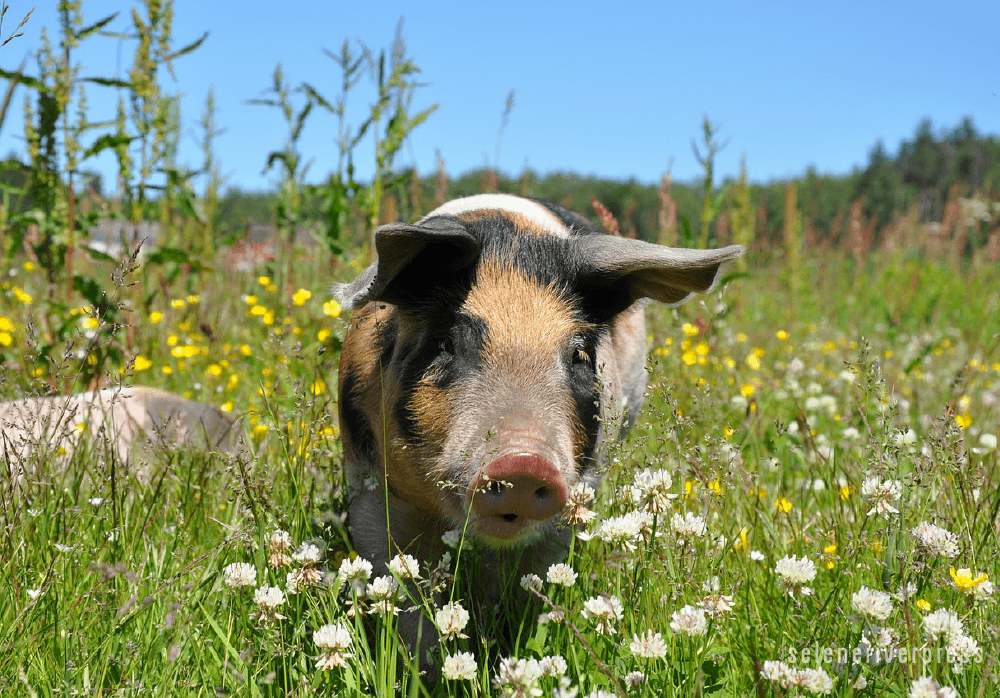There are certain news stories that tend to catch my eye, and one of the topics I can’t seem to look away from is our food supply. Watching the news is a brilliant way to convince yourself how important it is to know where your food comes from.
Look at these three recent headlines to see what I mean. They’re sure to get you planning your garden plot for next summer, looking up local farmers’ markets, and researching bulk meat resources.
“New Type of Drug-Free Labels for Meat Has U.S.D.A. Blessing”
There’s ractopamine in 60 to 80 percent of the pork in our food supply. Never heard of ractopamine? I hadn’t either, but I’ve never seen it listed as a suggested seasoning for pork chops. According to the New York Times, ractopamine hydrochloride is in a class of drugs known as beta-agonists. It causes animals to add more weight in the weeks before slaughter, even as they eat less food. Hmmm. Doesn’t food alone seem like a more natural method of gaining weight? Anyway, there were two points in the article that I found the most interesting and annoying at the same time. First, this drug saves farmers less than one dollar per pig. Not per pound, per pig. Second, the drug is banned in meat exports to Europe, China, and many other countries. Its long-term effects on human health are unknown, so of course they don’t want it. Hmmm, again. Luckily, the USDA approved food labels that state “produced without ractopamine” for the farmers who choose not to use it. This will at least keep consumers more informed about the food they buy.
If you buy conventional beef, Consumer Reports says there’s a pretty good chance it’s contaminated with fecal bacteria, some of it antibiotic-resistant. The contamination occurs when the intestines are punctured at the time of processing, and the methods used to sterilize contaminated meat don’t make it any more edible. These include high heat, chemicals, and/or radiation to kill the bacteria—and then the meat is shipped off for consumers to eat. Ground beef is the biggest culprit because the grinding process ensures that bacteria is mixed throughout the meat. Full cuts of meat are a bit safer since the contamination remains only on the surface, where it’s more likely to be cooked off.
The article goes on to explain that even the sustainable beef tested by Consumer Reports was contaminated, though at a much lower percentage. This tells me that it’s important to not only know how the livestock is raised but also how it’s processed. According to Consumer Reports, when you’re standing at the meat counter the safest option is grass-fed, organic beef. These animals are fed an appropriate diet, and they aren’t given antibiotics. A cleaner diet produces cleaner (and happier) animals—not to mention a more nutritious option for the consumer. Earlier this year, my family started buying bulk meat from a source we know personally. It feels good to support people who are doing it the right way. Next time around I’ll be sure to find out more about the practices used at processing plants.
“Salmonella Outbreak Kills One, Sickens Hundreds in the U.S.”
Step away from the cucumbers. In case you hadn’t heard, there’s been an outbreak of salmonella in cucumbers from Mexico in the past couple of months. Sure, this particular outbreak stems from products grown outside of the United States, but there have been plenty of others tied to products grown right inside our borders. Over the years we’ve seen domestic-borne illnesses caused by everything from cantaloupes from Indiana to celery from San Antonio, to name just two.
These types of stories seem to be cropping up more and more in the news lately, or maybe I’ve just become more aware of them. Either way, articles like the ones above make me more diligent about knowing where my family’s food comes from. Such knowledge doesn’t completely eliminate our exposure to food-borne illnesses; however, it certainly lessens the chance.
Interested in learning more about growing your own food or about the connection between our soil, our food, and our health? SRP has some super informative books you should check out.
Little House in the Suburbs by Deanna Caswell and Daisy Siskin. The authors cover everything from growing a garden to raising goats right in the backyard of your suburban home—you don’t need to have a bunch of acreage to make it happen. They also include some cool handmade gifts and yummy recipes to try.
From Soil to Supplement: A Course in Food, Diet, and Nutrition, Taught by Dr. Royal Lee. Everyone knows nutrition depends on the quality of the foods we grow and eat. If you’ve ever wondered what determines that quality, this book is for you.




Thanks for this important info, Paula!
You are welcome, Sam! Thanks for taking the time to read the post and comment! :)